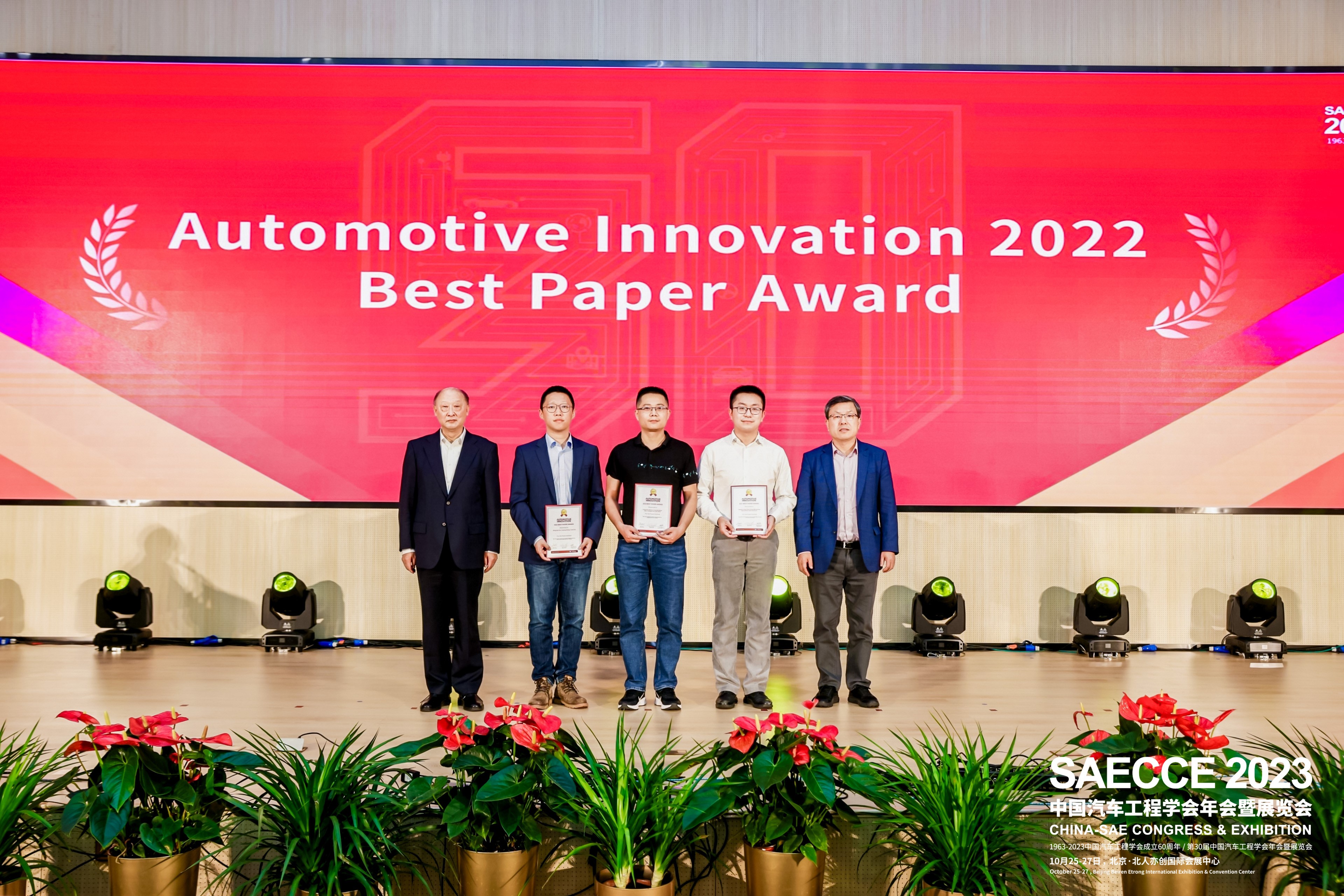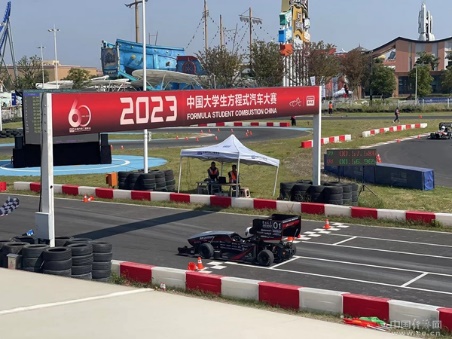

|
The journal Automotive Innovation is sponsored by China SAE,
published through Springer Nature, distributed around the
world, it reflects the top-level research and technological
advance of automotive engineering. Automotive Innovation newsletter in October includes the following contents: 1. Article Recommendation——Three papers on Autonomous Vehicles 2. China SAE News:
|

   
|
A Bayesian Approach with Prior Mixed Strategy Nash
Equilibrium for Vehicle Intention Prediction Giovanni Lucente, Reza Dariani, Julian Schindler, Michael Ortgiese |
||
| The state-of-the-art technology in the field of vehicle automation will lead to a mixed traffic environment in the coming years, where connected and automated vehicles have to interact with human-driven vehicles. In this context, it is necessary to have intention prediction models with the capability of forecasting how the traffic scenario is going to evolve with respect to the physical state of vehicles, the possible maneuvers and the interactions between traffic participants within the seconds to come. This article presents a Bayesian approach for vehicle intention forecasting, utilizing a game-theoretic framework in the form of a Mixed Strategy Nash Equilibrium (MSNE) as a prior estimate to model the reciprocal influence between traffic participants. The likelihood is then computed based on the Kullback-Leibler divergence. The game is modeled as a static nonzero-sum polymatrix game with individual preferences, a well known strategic game. Finding the MSNE for these games is in the PPAD \cap PLS complexity class, with polynomial-time tractability. The approach shows good results in simulations in the long term horizon (10s), with its computational complexity allowing for online applications. | |||
|
Keywords: Vehicle intention prediction, Trajectory prediction,
Bayesian approach, Mixed strategy, Nash equilibrium Lucente, G., Dariani, R., Schindler, J. et al.: A Bayesian Approach with Prior Mixed Strategy Nash Equilibrium for Vehicle Intention Prediction. Automot. Innov. 6, 425–437 (2023) |
|||
| Full Paper Reading>> | |||
   
|
Deep Reinforcement Learning Based Decision-Making Strategy of
Autonomous Vehicle in Highway Uncertain Driving Environments Huifan Deng, Youqun Zhao, Qiuwei Wang, Anh-Tu Nguyen |
||
| Uncertain environment on multi-lane highway, e.g., the stochastic lane-change maneuver of surrounding vehicles, is a big challenge for achieving safe automated highway driving. To improve the driving safety, a heuristic reinforcement learning decision-making framework with integrated risk assessment is proposed. First, the framework includes a long short-term memory model to predict the trajectory of surrounding vehicles and a future integrated risk assessment model to estimate the possible driving risk. Second, a heuristic decaying state entropy deep reinforcement learning algorithm is introduced to address the exploration and exploitation dilemma of reinforcement learning. Finally, the framework also includes a rule-based vehicle decision model for interaction decision problems with surrounding vehicles. The proposed framework is validated in both low-density and high-density traffic scenarios. The results show that the traffic efficiency and vehicle safety are both improved compared to the common dueling double deep Q-Network method and rule-based method. | |||
|
Keywords: Automated driving, Decision making, Uncertain driving
environments, Reinforcement learning, Multi-lane traffic,
Integrated risk assessment
Deng, H., Zhao, Y., Wang, Q. et al.: Deep Reinforcement Learning Based Decision-Making Strategy of Autonomous Vehicle in Highway Uncertain Driving Environments. Automot. Innov. 6, 438–452 (2023) |
|||
| Full Paper Reading>> | |||
   
|
On-ramp Merging for Highway Autonomous Driving based on Deep
Reinforcement Learning Guofa Li, Weiyan Zhou, Shen Li, Xingda Qu |
||
| This paper proposes an improved decision-making method based on deep reinforcement learning to address on-ramp merging challenges in highway autonomous driving. A novel safety indicator, time difference to merging (TDTM), is introduced, which is used in conjunction with the classic time to collision (TTC) indicator to evaluate driving safety and assist the merging vehicle in finding a suitable gap in traffic, thereby enhancing driving safety. The training of an autonomous driving agent is performed using the Deep Deterministic Policy Gradient (DDPG) algorithm. An action-masking mechanism is deployed to prevent unsafe actions during the policy exploration phase. The proposed DDPG + TDTM + TTC solution is tested in on-ramp merging scenarios with different driving speeds in SUMO and achieves a success rate of 99.96% without significantly impacting traffic efficiency on the main road. The results demonstrate that DDPG + TDTM + TTC achieved a higher on-ramp merging success rate of 99.96% compared to DDPG + TTC and DDPG. | |||
|
Keywords: Autonomous driving, On-ramp merging, Deep
reinforcement learning, Action-masking mechanism, Deep
Deterministic Policy Gradient (DDPG) Li, G., Zhou, W., Lin, S. et al. On-Ramp Merging for Highway Autonomous Driving: An Application of a New Safety Indicator in Deep Reinforcement Learning. Automot. Innov. 6, 453–465 (2023) |
|||
| Full Paper Reading>> | |||

| Automotive Innovation 2022 Best Paper Award Announced | |||
 Automotive Innovation 2022 Best Paper Award was organized. The objective of the annual AUIN Best Paper Award is to recognize outstanding contributions to the body of theoretical or practical knowledge in the automotive field. The Award was selected by the Award Committee based on general quality of paper, subject matter, originality, scientific, technological and innovative excellence of the paper, as well as the download and citation. 3 best papers were selected from 34 articles published in Automotive Innovation in 2022:
|
|||
| SMC 2023 to be held on Nov. 15-16 in Shanghai | |||
 China SAE will host the 4th International Smart Mobility Congress on November 15-16, 2023 in Shanghai, to jointly promote the integration and international cooperation of the intelligent and connected vehicle industry. The congress contains 1 main forum, 5 technical sessions, covering over 100 speakers and over 300 companies. For more detailed information about the conference and exhibition, click here . |
|||
| 2023 Formula Student Combustion China successfully held in Xiangyang, China | |||
 On October 14, the 2023 Formula Student Combustion China came to a successful close. This year's competition featured three static events, including design defense, marketing defense, and cost defense; and five dynamic events, including straight-line acceleration, figure-of-eight loop, high-speed obstacle avoidance, endurance race, and efficiency test. A total of 56 teams registered for this year's competition, and there were over 2,000 participants. After four days of intense competition, Jilin University emerged as the champion in this year's Formula Student Combustion China, securing a total score of 900.86. The second place was claimed by Xiamen Institute of Technology with a score of 870.51, while Liuzhou Institute of Technology secured the third place with a score of 853.06. For more information, please click here . |
|||

|
Automotive Innovation Sponsored by China SAE and published globally via Springer Nature, Automotive Innovation aims to be a world-class journal that provides abundant sources of innovative findings for automotive engineers and scientists. The journal is published quarterly, ensuring high-quality papers satisfying international standards. With the editorial board consisting of world-renowned experts, it has attracted readers from 72 countries and regions. The highest download of a single article wins more than 32,000. The journal is indexed in Ei Compendex, ESCI, and Scopus (IF2022=6.1). The journal provides a forum for the research of principles, methodologies, designs, theoretical background, and cutting-edge technologies in connection with the development of vehicle and mobility. The main topics cover: energy-saving, electrification, intelligent and connected, safety, and emerging vehicle technologies. Editors-in-Chief Jun Li, Academician of CAE, President of China SAE, Professor of Tsinghua University Frank Zhao, Honorary Lifetime President of FISITA, Director of Tsinghua Automotive Strategy Research Institute, Professor of Tsinghua University Executive Associate Editor-in-Chief Prof. Xinjie Zhang, Professor of Jilin University |
||||
|
Paper submission and browse www.ChinaSAEJournal.com.cn www.springer.com/42154 Contacts: Ms. Lily Lu Tel: +86-10-50950101 Email: jai@sae-china.org 
|

|
|||
|
Sponsored by |
Published by
|
|||